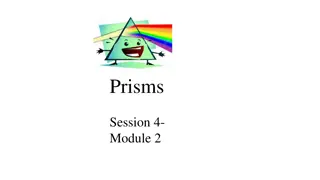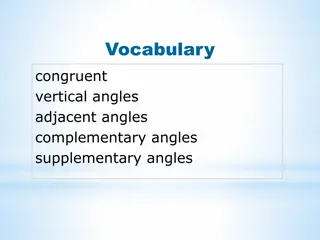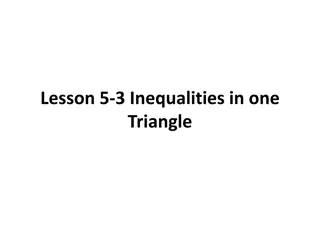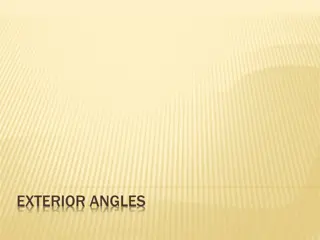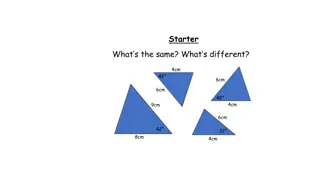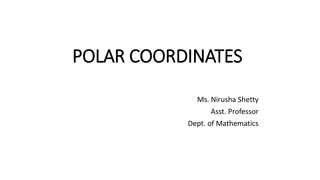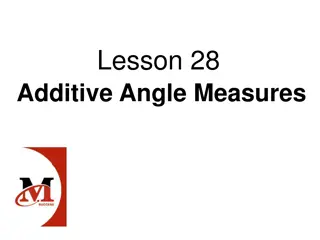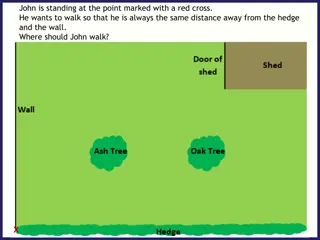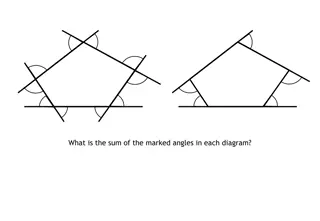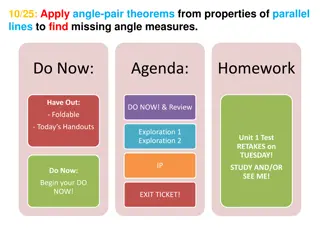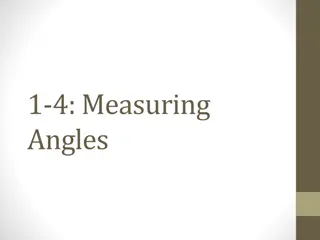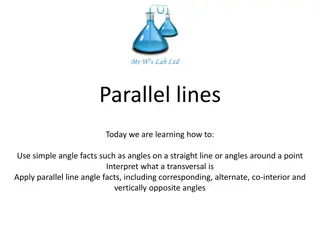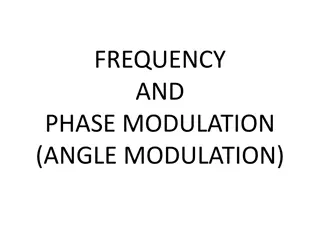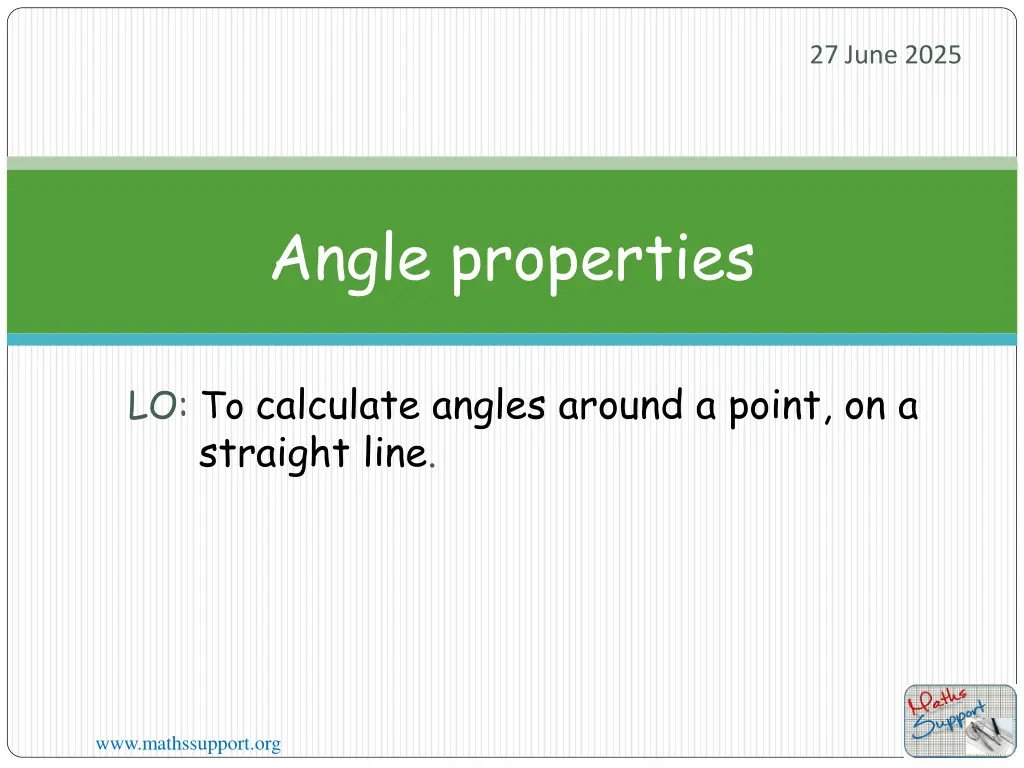
Understanding Angle Properties in Planar Geometry
Explore the concept of angles around a point and on a straight line in planar geometry. Learn about intersecting lines, parallel lines, vertically opposite angles, adjacent angles, and more. Discover the significance of angles at points of intersection and how they add up to create a full turn.
Download Presentation

Please find below an Image/Link to download the presentation.
The content on the website is provided AS IS for your information and personal use only. It may not be sold, licensed, or shared on other websites without obtaining consent from the author. If you encounter any issues during the download, it is possible that the publisher has removed the file from their server.
You are allowed to download the files provided on this website for personal or commercial use, subject to the condition that they are used lawfully. All files are the property of their respective owners.
The content on the website is provided AS IS for your information and personal use only. It may not be sold, licensed, or shared on other websites without obtaining consent from the author.
E N D
Presentation Transcript
27 June 2025 Angle properties LO: To calculate angles around a point, on a straight line. www.mathssupport.org
LINES IN A PLANE A flat two-dimensional surface is called a plane. Any two straight lines in a plane either intersectonce This is called the point of intersection. www.mathssupport.org
LINES IN A PLANE or they are parallel. We use arrow heads to show that lines are parallel. Parallel lines will never meet. They stay an equal distance apart. We can say that parallel lines are always equidistant. Where do you see parallel lines in everyday life? www.mathssupport.org
LINES IN A PLANE For intersecting lines, angles which are directly opposite each other are called.Vertically opposite angles Vertically opposite angles. Vertically opposite angles are equal in size www.mathssupport.org
LINES IN A PLANE Two angles which have the same vertex and share a common arm are called. Adjacent angles B C A D Are Adjacent angles CAD BAC www.mathssupport.org
LINES IN A PLANE What is special about the angles at the point of intersection here? a a = b = c = d b d Each angle is 90 . We show this with a small square in each corner. c Lines that intersect at right angles are called Perpendicular lines. www.mathssupport.org
LINES IN A PLANE What if we draw the angles around a point? a + b + c + d = 360 b c a All the angles together make a full turn. d Angles around a point add up to 360 www.mathssupport.org
COMPLEMENTARY ANGLES When two angles add up to 90 they are called complementary angles. a b a + b = 90 Angle a and angle b are complementary angles. www.mathssupport.org
SUPPLEMENTARY ANGLES When two angles add up to 180 they are called supplementary angles. b a a + b = 180 Angle a and angle b are supplementary angles. www.mathssupport.org
EXAMPLE 1 AB is a straight line, find the value of the unknown. x 73 78 A B C 78 + 73 +x = 180 151 +x = 180 x = 29 www.mathssupport.org
EXAMPLE 2 ? ?? is a is a right angle, find the value of the unknown. C 62 b B A 62 +b = 90 x = 90 - 62 x = 28 www.mathssupport.org
EXAMPLE 3 Find the value of the unknown. We have five angles at a point. All the angles together make a full turn. So the sum of the five angles is 360 x x 126 x = 360 3x + 126 + 90 3x + 216 = 360 3x = 144 x = 48 www.mathssupport.org
Thank you for using resources from A close up of a cage Description automatically generated For more resources visit our website https://www.mathssupport.org If you have a special request, drop us an email info@mathssupport.org Get 20% off in your next purchase from our website, just use this code when checkout: MSUPPORT_20 www.mathssupport.org


